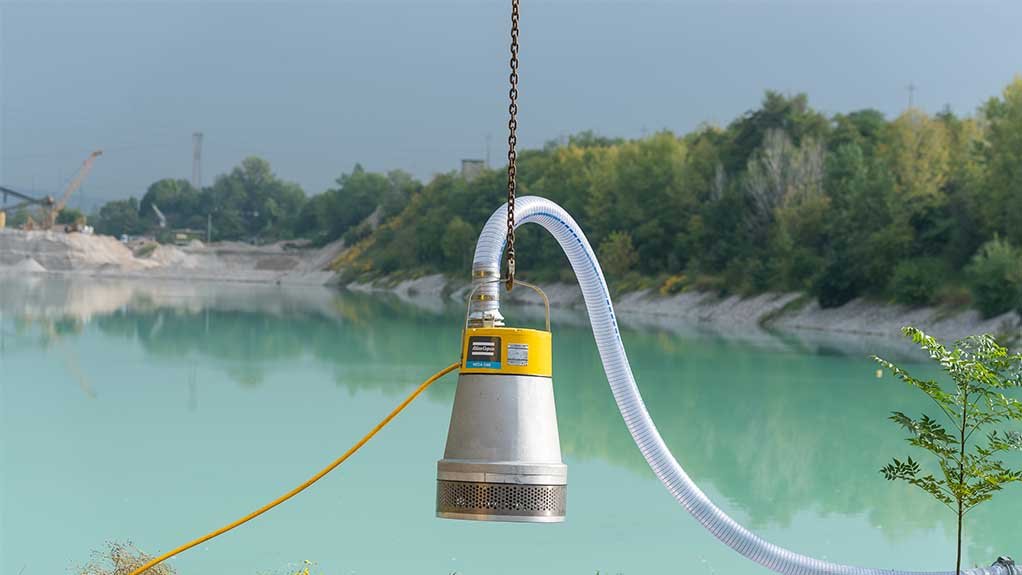Choosing the right pump for dewatering projects
Recently appointed master dealer for Atlas Copco dewatering pumps in Southern Africa, IPR, says it is well-placed to advise on selecting the most appropriate pumps for specific dewatering projects.
IPR product manager Steve du Toit notes that there are a range of factors to consider when choosing a pump, such as the nature of the fluid to be pumped and the nature of the site.
“You need to know the weight of the fluid, so that the pump has enough power to draw the liquid through,” he says. “In many cases, we find different fluid types on the same construction, quarrying or mining site; sludge, construction materials and other insoluble materials must often be pumped along with the fluid.”
“The pH level in the fluid is also essential to understand, as this indicates how acidic the liquid is,” he explains. “The further the fluid deviates from the neutral … the more chemical impact the fluid will have on the pump’s internal components.”
Du Toit notes that the pump internals must be constructed of appropriate material to ensure resistance to fluids with high acid or base characteristics.
Another important consideration is the nature of the site – whether it is easily accessible, the availability of electric power, if the site is elevated, and the distance to be pumped. These factors will determine, for example, whether a trailer-mounted pump system is required for ease of transport and if a diesel-powered or electric solution is more suitable.
Pumping uphill requires an understanding of the static discharge head – which is the height of the source of the fluid being pumped, to the height of its destination. Du Toit explains that pressure is lost for every metre uphill that is pumped, and a pump’s performance curve must be considered. The performance curve chart describes how much volume over time a pump moves under a given pressure rating. The volume that can be pumped over time is measured in litres per second or cubic metres per hour and shows the pump’s duty point or operating pump point.
Du Toit highlights that IPR can advise customers on all aspects of dewatering pump selection as well as offer advice related to operating procedures and maintenance.
Article Enquiry
Email Article
Save Article
Feedback
To advertise email advertising@creamermedia.co.za or click here
Comments
Press Office
Announcements
What's On
Subscribe to improve your user experience...
Option 1 (equivalent of R125 a month):
Receive a weekly copy of Creamer Media's Engineering News & Mining Weekly magazine
(print copy for those in South Africa and e-magazine for those outside of South Africa)
Receive daily email newsletters
Access to full search results
Access archive of magazine back copies
Access to Projects in Progress
Access to ONE Research Report of your choice in PDF format
Option 2 (equivalent of R375 a month):
All benefits from Option 1
PLUS
Access to Creamer Media's Research Channel Africa for ALL Research Reports, in PDF format, on various industrial and mining sectors
including Electricity; Water; Energy Transition; Hydrogen; Roads, Rail and Ports; Coal; Gold; Platinum; Battery Metals; etc.
Already a subscriber?
Forgotten your password?
Receive weekly copy of Creamer Media's Engineering News & Mining Weekly magazine (print copy for those in South Africa and e-magazine for those outside of South Africa)
➕
Recieve daily email newsletters
➕
Access to full search results
➕
Access archive of magazine back copies
➕
Access to Projects in Progress
➕
Access to ONE Research Report of your choice in PDF format
RESEARCH CHANNEL AFRICA
R4500 (equivalent of R375 a month)
SUBSCRIBEAll benefits from Option 1
➕
Access to Creamer Media's Research Channel Africa for ALL Research Reports on various industrial and mining sectors, in PDF format, including on:
Electricity
➕
Water
➕
Energy Transition
➕
Hydrogen
➕
Roads, Rail and Ports
➕
Coal
➕
Gold
➕
Platinum
➕
Battery Metals
➕
etc.
Receive all benefits from Option 1 or Option 2 delivered to numerous people at your company
➕
Multiple User names and Passwords for simultaneous log-ins
➕
Intranet integration access to all in your organisation





















